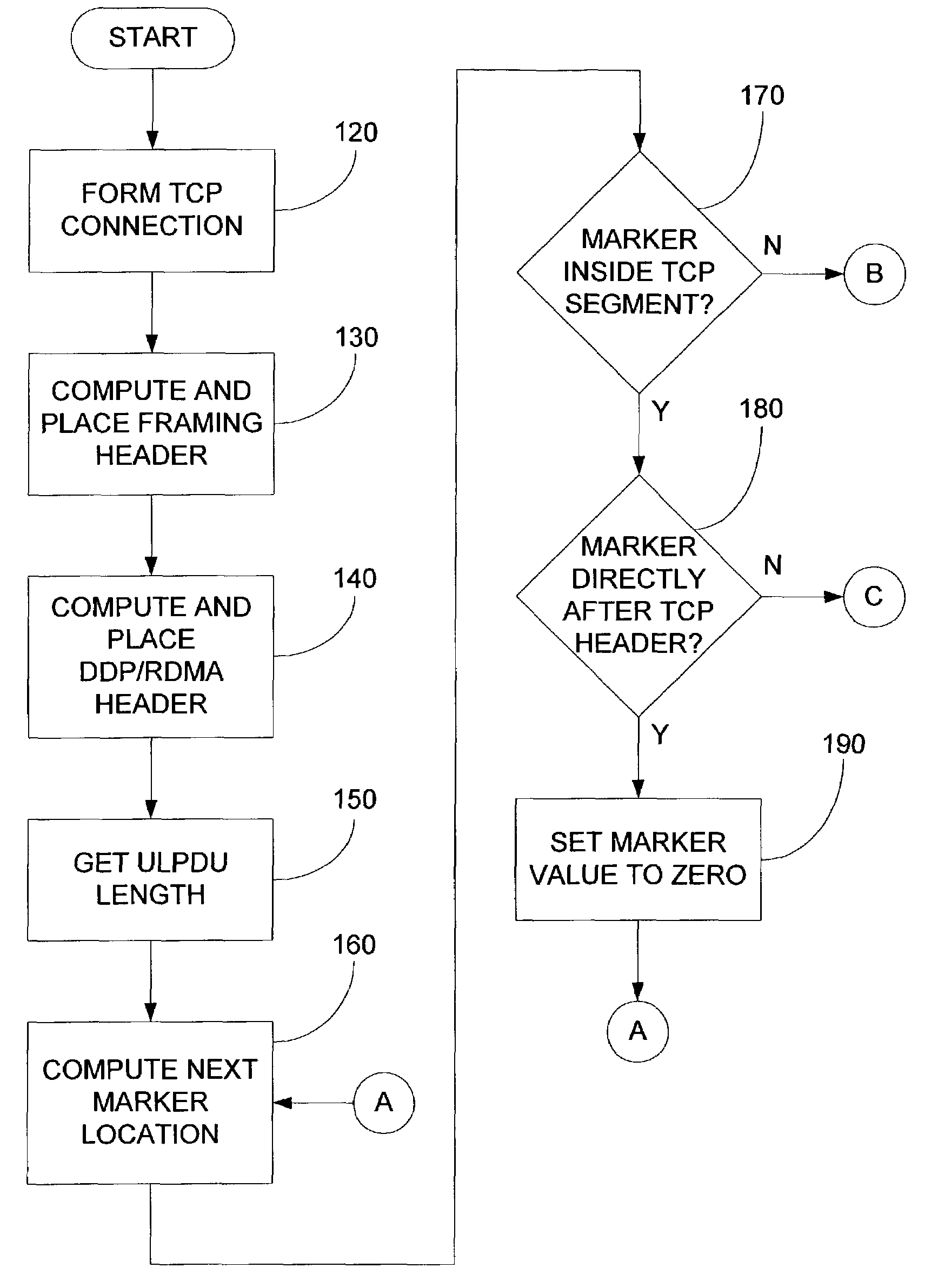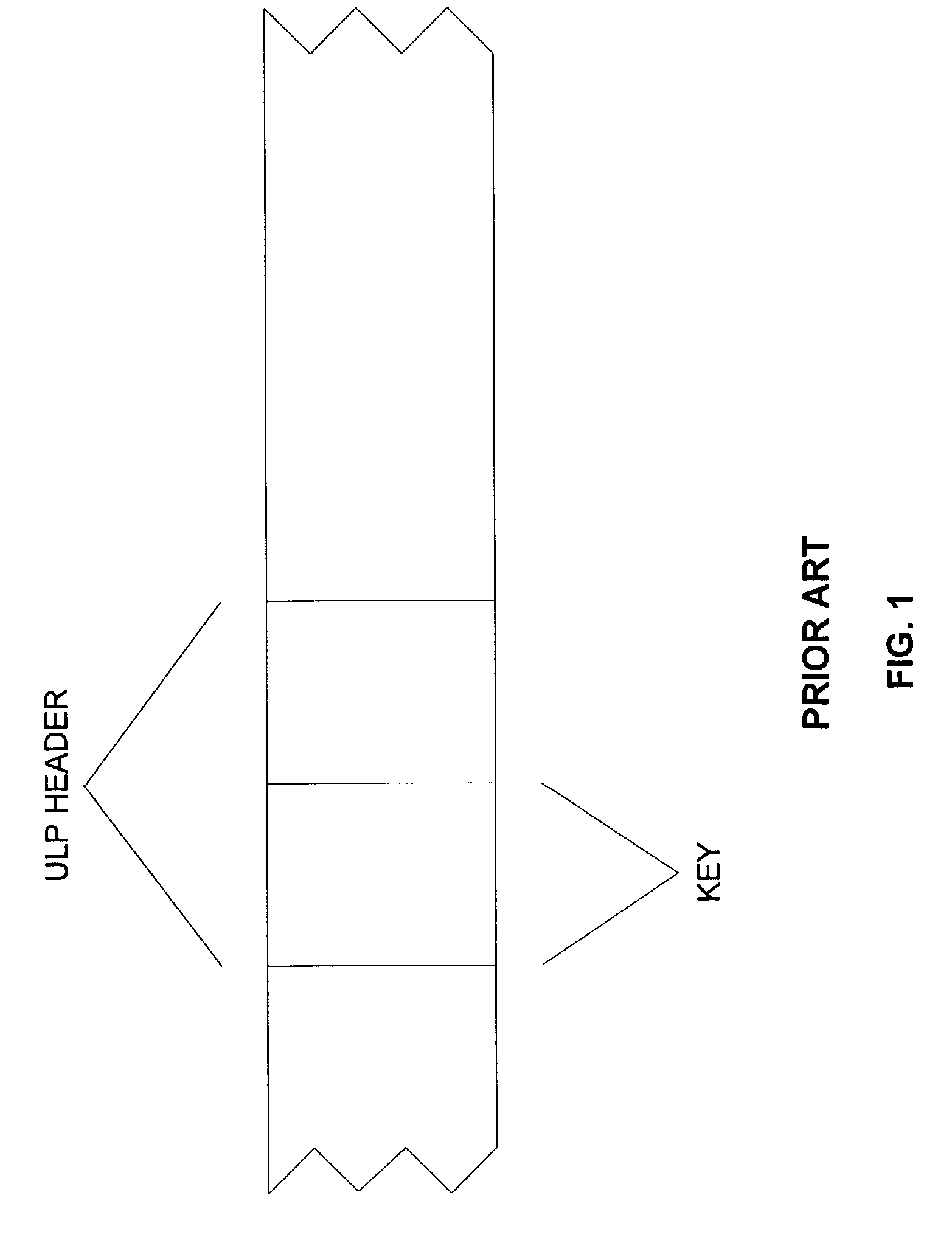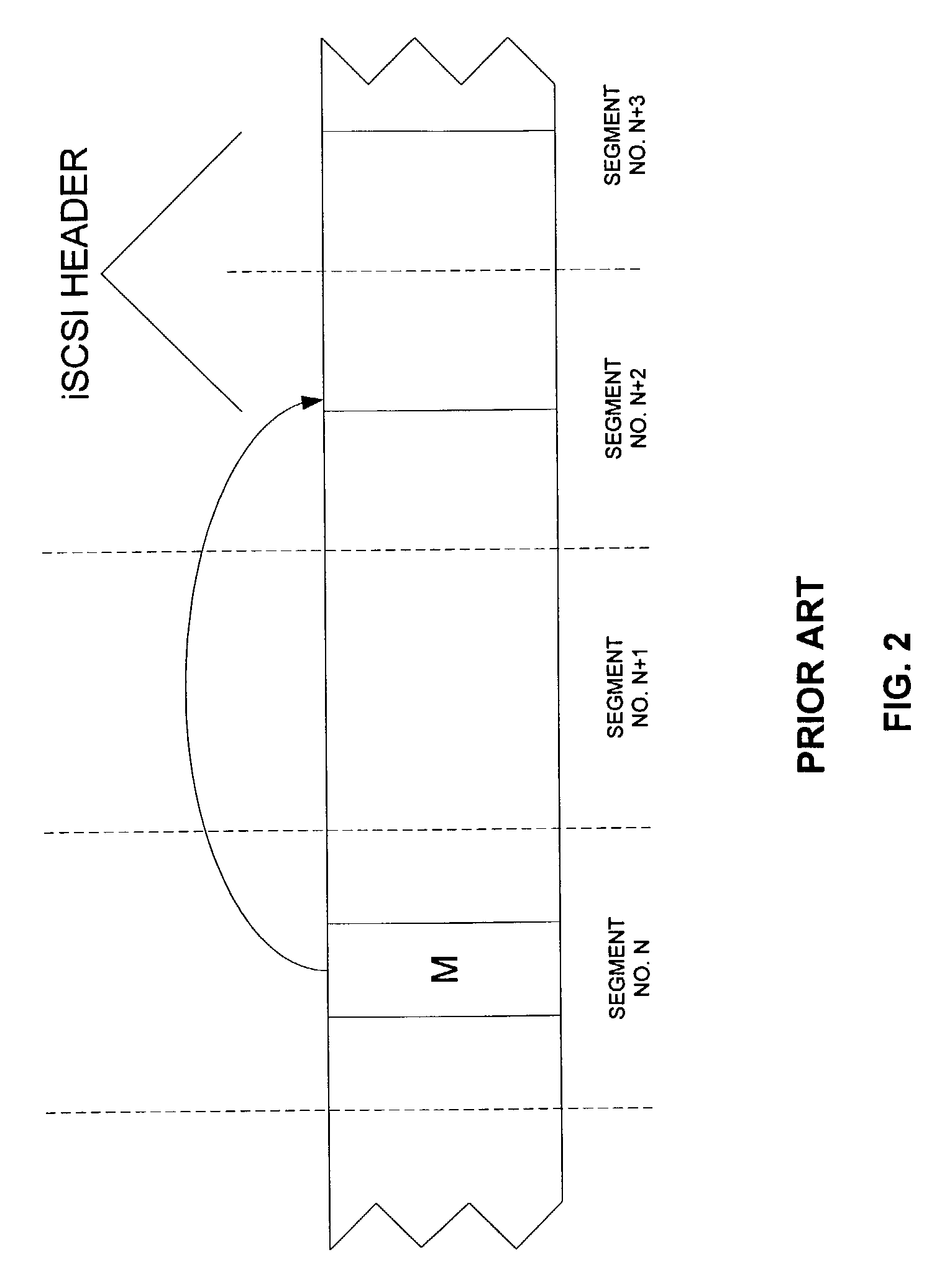System and method for identifying upper layer protocol message boundaries
a protocol message and protocol message technology, applied in the field of system and method for identifying upper layer protocol message boundaries, can solve the problems of preventing the system from supporting 10 gigabit network traffic, incurring high overhead of processing and copying, and consuming a substantial amount of host processing power and memory bandwidth at the receiver
- Summary
- Abstract
- Description
- Claims
- Application Information
AI Technical Summary
Benefits of technology
Problems solved by technology
Method used
Image
Examples
Embodiment Construction
[0036]FIG. 3 shows an embodiment of a system that may provide a method for identifying Upper Layer Protocol (ULP) message boundaries. For example, the method may identify ULP message boundaries in a byte stream transport protocol (e.g., a framing protocol). A transmitter 10 (e.g., a client) may be coupled to a receiver 30 (e.g., a server) via a network 20 such as, for example, the internet. The network 20 may optionally include an intermediate box 40. A TCP connection may be initiated between the transmitter 10 and the receiver 30. The intermediate box 40 (e.g., a firewall) may terminate the TCP connection of the transmitter 10 and may initiate another TCP connection with the receiver 30. The intermediate box 40 may receive a first set of TCP frames from the transmitter 10 and resegment the first set of TCP frames into a second set of TCP frames. The resegmentation of the first set of TCP frames may, for example, result in smaller TCP frames. In such a case, the TCP frame scheme sen...
PUM
 Login to View More
Login to View More Abstract
Description
Claims
Application Information
 Login to View More
Login to View More - R&D
- Intellectual Property
- Life Sciences
- Materials
- Tech Scout
- Unparalleled Data Quality
- Higher Quality Content
- 60% Fewer Hallucinations
Browse by: Latest US Patents, China's latest patents, Technical Efficacy Thesaurus, Application Domain, Technology Topic, Popular Technical Reports.
© 2025 PatSnap. All rights reserved.Legal|Privacy policy|Modern Slavery Act Transparency Statement|Sitemap|About US| Contact US: help@patsnap.com



